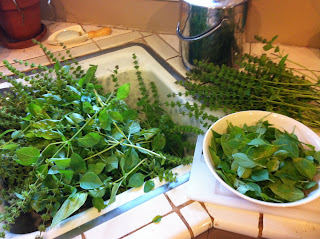How to Make Yummy Liqueur out of Bumper™ Satsumas the Easy Way
 |
| Satsuma-cello Cordial |
Satsuma-cello is the Garden Debut® version of the
sweet Italian liqueur known as Limoncello.
Make Satsuma-cello from your home-grown harvest right now in time for
the Christmas holidays.
This fruit tree produces more Satsumas than other varieties of Satsuma and grows 10-12 feet tall in ground.
Brilliant orange fruits contrast well with dark green, glossy, evergreen foliage for an edible ornamental hardy to 15 degrees F. (U.S.D.A. Zone 8B).
 |
| Bumper™ Hardy Satsuma |
Satsuma-cello,
makes 1 quart
Ingredients
10
Bumper™ Satsumas
1
bottle (750 ml ) 150–proof Vodka
Large,
lidded glass jar for steeping
2
cups white sugar
1
cup water
Directions
Scrub your Bumper™ Satsumas then zest them using a
zester or vegetable peeler.
 |
| Zesting the Satsuma |
Take care not to include any of the white inner
pith since this will make your liqueur bitter. (Reserve the sections for juice or add to
green tossed salads.
 |
| Removing Pith from Zest |
Place the peels in a large glass jar with a lid
and pour good-quality high test vodka over the Satsuma peels.
 |
| Steep where it is handy to swish |
Steep at room
temperature for 10 days to 4 weeks, swishing gently every 5 days or so to mix. The
longer the mixture rests, the more intense the flavor will be.
Test if it is
ready by smelling its fragrance and by checking if the peels snap when bent in
half. The vodka slowly takes on the flavor and color of the Satsuma peels.
 |
| Strain the peels from the Vodka essence |
Remove the peels by straining the flavored vodka essence through a coffee filters until clear. I put the coffee filter inside a strainer to keep it upright.
 |
| Add Sugar Syrup to Vodka Essence |
Make sugar syrup by dissolving white cane sugar in
water in a saucepan and cooking over medium heat until just dissolved, but do
not bring to a boil. If you use unbleached sugar, your Satsuma-cello will be
more tan in color.
Cool and add syrup to the strained vodka essence,
then steep for another 4 weeks in a cool, dark location, again swishing gently every once in awhile to combine flavors.
Voila! Satsuma-cello
The finished liqueur will be ready to enjoy with a dessert or to package in
decorative glass bottles for holiday gifts.
Satsuma=cello is great as an after-dinner
digestif in a small cordial glass, as an ice cream topping or in the construction of cocktails such as
Cosmopolitans.
Click on individual photos to enlarge them.
\
photos copyright Geri Laufer, 2012
please give credit.











































